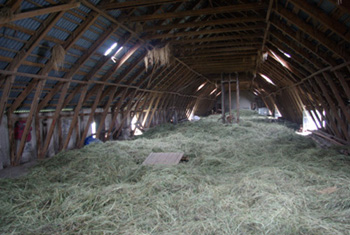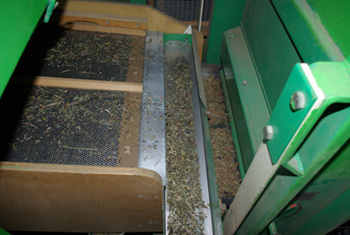

|

| EN
| CZ
|
|
INTRODUCTION
PROJECT GOALS
PROJECT TEAM
EXPERIMENTAL SITES
MONITORING BIODIVERSITY
USING HEMIPARASITES
DEVELOPING SEED MIXTURES
TECHNICAL STANDARDS
PROJECT OUTPUTS
MEDIA INTEREST
HELPFUL LINKS
|
Production of hemiparasitic plant seeds and its use(Working Group No. 2 - coordinator Assoc. Prof. Stanislav Hejduk)Project team developed certificated technology of hemiparasitic plant seed production of Great yellow rattle (Rhinanthus alectorolophus). Seeds of Rhinanthus are not widely available yet, but it is known that these plants can be used to convert existing high and thick (productive) grasslands into the lower and sparse vegetation of dicotyledonous forbs producing nectar for pollinator insects. In the last two decades, Rhinanthus minor has been experimentally used in England to lower productivity and promote the vegetation diversity of meadows and highway slopes. This technology, however, has not spread, due to poor establishment of the used species in new areas and also because of the high price of the seed.
Until now the multiplication of Rhinanthus seeds was going on in the stands of Calamagrostis epigejos in forest clearings, and these stands are technically difficult to adjust for sowing and harvesting. Thus, field experiment with nine cultivated species of grasses and four species of perennial legumes was started in September 2015 in order to identify the suitable host species for commercial seed production of hemiparasitic Rhinanthus. In November, seeds from both Rhinanthus species were sown inside these experimental monocultures. The plot size was 4 m2 and it is a triplicate experiment. Results showed that 1 ha of agricultural land could annually produce 200 kg of Rhinanthus alectorolophus seeds, but in some years the seed yield is as low as the seeding rate. The cultivation is demanding, among other things, for proper fencing of the area at the time of flowering and for a properly timed harvest and post-harvest treatment (seed drying and cleaning). This fact makes, in the current state of soil preparation, harvesting and seed cleaning prices, good assumptions that the price of Rhinanthus seed could cost 14 EUR per 1 kg (in 2020), which is considerably more than the seed prices of cultural grasses. Treatment of grassland with Rhinanthus proceeds as follows. After autumn sowing of 500 seeds (i. e. about 2 g) per 1 m2, Rhinanthus within one or two subsequent growing seasons suppresses growth of productive grasses. This indirectly supports especially forbs with rosette leaves which are effective in defending against Rhinanthus haustoria (suction root organs). This change of species composition will thus lead to a very significant reduction of total aboveground biomass production and the stand height (up to half). Whereas Rhinanthus is an annual plant, it is totally dependent on its host (grasses), after suppression of vegetation it also retreats and opens the space for spontaneous colonization of other plant species from the seed bank or the neighbouring areas. It is also possible to use the thinning of swards for overseeding with target, nectar producing species (support of pollinators). At the same time it releases its nutrients from biomass for newcoming species. With a wealth of litter on the soil surface and soil structure stabilization with decaying grass roots, there is no danger of erosion in the meantime before the development of dicotyledonous forbs. |
    |